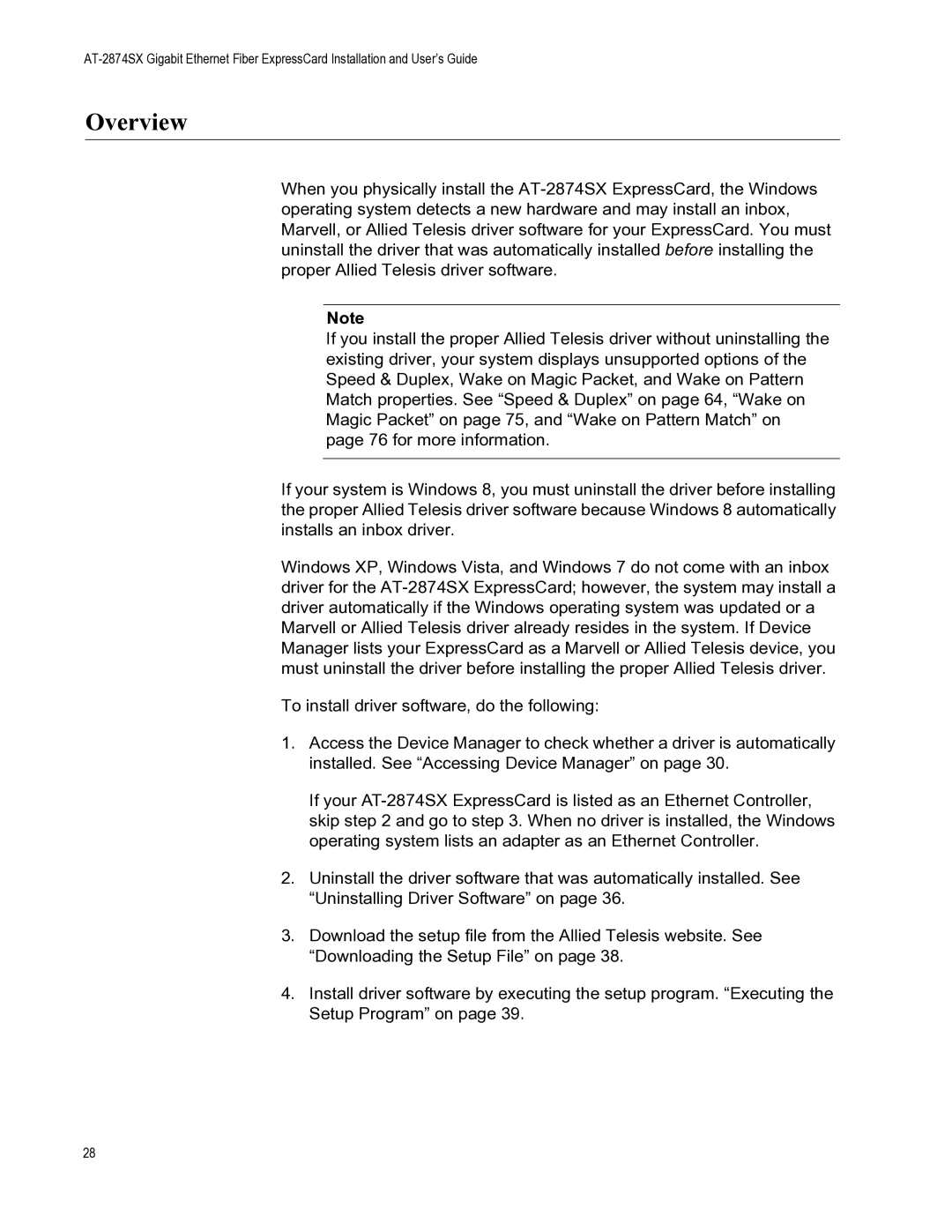AT-2874SX, AT-2874SX/SC specifications
The Allied Telesis AT-2874SX/SC and AT-2874SX are versatile network switches designed to provide reliable connectivity and performance in various network environments. With a focus on flexibility, scalability, and efficiency, these models are well-suited for both enterprise and smaller-scale networks, meeting the demands of a continuously evolving digital landscape.One of the main features of the AT-2874SX/SC and AT-2874SX is their support for multiple fiber optic connections. These switches are equipped with SFP (Small Form-factor Pluggable) slots allowing network administrators to select the appropriate transceivers for their specific applications. This modularity ensures that the switch can adapt to different network configurations and distances, making it ideal for both short and long-range connectivity.
In terms of performance, the AT-2874SX/SC and AT-2874SX can support up to 1000 Mbps throughput, making them very suitable for high-bandwidth applications such as video conferencing, real-time data processing, and online collaboration tools. The switches also incorporate advanced features such as Quality of Service (QoS), which prioritizes critical network traffic to ensure smooth operation even during peak usage times.
Security is a significant consideration in modern networking, and these Allied Telesis models do not fall short. They offer robust security features, including VLAN support for logical segmentation of network traffic. This capability enhances security by isolating sensitive data and minimizing the risk of unauthorized access. Additionally, the switches come equipped with port security features that allow administrators to define specific policies, further safeguarding the network.
The AT-2874SX/SC and AT-2874SX are also designed with manageability in mind. They support SNMP (Simple Network Management Protocol), allowing for easy monitoring and management of network performance. The switches can be monitored in real time, offering insights into traffic patterns and potential issues, enabling proactive management.
Power consumption is another key consideration, and Allied Telesis has ensured that these switches are energy-efficient, contributing to a lower total cost of ownership over time. With a compact design, they can be easily deployed in diverse environments without requiring significant space.
In conclusion, the Allied Telesis AT-2874SX/SC and AT-2874SX feature a blend of high performance, flexibility, and security. Their support for fiber optics, advanced management capabilities, and energy-efficient design make them an excellent choice for organizations looking to enhance their network infrastructure.

